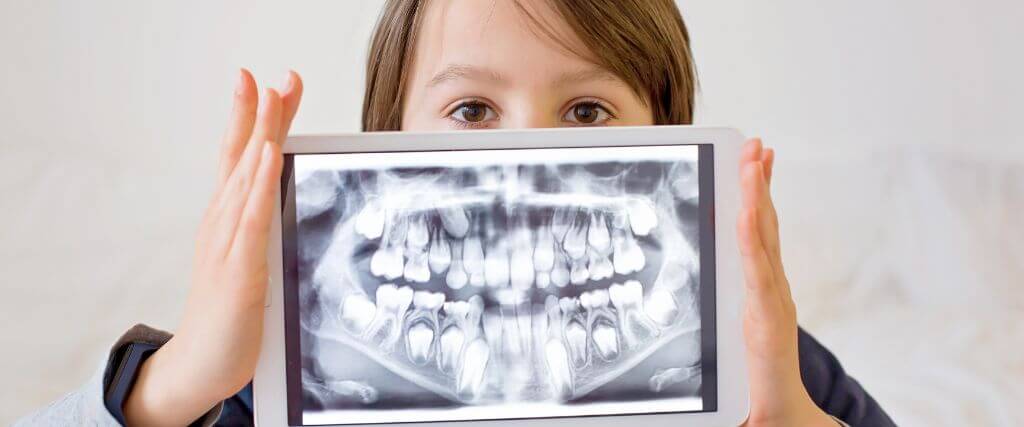As dental professionals, we often hear questions about dental X-rays from our patients. We understand that X-rays can seem a bit mysterious or even concerning to some. That’s why we’ve put together this article to address your top questions about dental X-rays. Let’s dive into the world of dental radiography and uncover why these important diagnostic tools are vital to maintaining your oral health.
1. What Are Dental X-Rays, and Why Are They Important?
Dental X-rays, also known as radiographs, are images that capture the inside of your mouth, including your teeth, bones, and surrounding soft tissues. The X-ray machine uses a small amount of radiation to take these pictures, giving dental professionals a detailed view that goes beyond what can be seen during a standard dental exam.
Think of dental X-rays as a powerful tool that helps uncover hidden dental problems. They can reveal cavities, bone loss linked to gum disease, the condition of tooth roots, and surrounding bone structure. X-rays are also essential for monitoring the growth of children’s teeth and for planning treatments like braces or dental implants.
2. How Often Should I Get Dental X-Rays?
How often one needs dental X-rays varies from person to person and depends on several factors, including your current oral health, age, risk for dental disease, and any signs and symptoms of oral disease.
As a general guideline, bitewing X-rays (which show the upper and lower back teeth) are usually recommended once every 12 to 36 months for adults with good oral health. Children and teenagers may need X-rays more often, as their teeth and jaws are still developing. If you have a history of gum disease, frequent cavities, or other dental issues, your dentist might recommend more frequent X-rays to monitor your oral health closely.
+(1).jpg)
3. Are Dental X-Rays Safe?
We hear this question a lot, and we’re always happy to address it. In short, yes, dental X-rays are safe. The amount of radiation you’re exposed to during dental X-rays is extremely low, especially with modern digital X-ray technology.
To put it in perspective, a set of bitewing X-rays exposes you to about the same amount of radiation you’d receive from a short airplane flight or a day out in the sun. Plus, dental professionals take several precautions to ensure your safety, including using lead aprons and thyroid collars to protect your body from radiation. Modern digital X-ray technology reduces radiation exposure by up to 80% compared to film X-rays. Dentists also follow the ALARA principle (As Low As Reasonably Achievable), which means they only take X-rays when necessary.
4. What Types of Dental X-Rays Are There?
There are several types of dental X-rays, each serving a different purpose.
The most common ones you might encounter are:
- Bitewing X-Rays: Show the top and bottom back teeth in a single view.
- Periapical X-Rays: Display the entire tooth from crown to root tip.
- Panoramic X-Rays: Provide an overall view of the whole mouth.
- Occlusal X-Rays: Capture all the teeth in either the upper or lower jaw in one shot.
Each type of X-ray provides unique information, helping us provide you with the best possible care. Bitewing X-rays are great for detecting cavities between teeth and assessing bone structure, and periapical X-rays are useful for identifying deep dental problems. Dentists often rely on panoramic X-rays when planning treatments like braces or implants. Lastly, occlusal X-rays are particularly useful for detecting issues in children’s developing teeth.
5. Do Kids Need Dental X-Rays?
Yes, children often need dental X-rays, sometimes even more frequently than adults. Children’s teeth and jaws are constantly growing and changing, and X-rays help dentists monitor this development and catch any issues early. They can reveal problems with emerging teeth and ensure they’re coming in correctly. X-rays also reveal decay between teeth that might not be visible during a regular exam, and they help us determine if there’s enough space in the mouth for all the permanent teeth.
.jpg)
6. Can I Get Dental X-Rays While Pregnant?
Generally speaking, it’s safe for you to have dental X-rays during pregnancy, but your dental team will take extra precautions. They typically avoid routine dental X-rays during pregnancy, especially during your first trimester. If X-rays are necessary to address a dental emergency or for essential treatment planning, they’ll take special care to shield your abdomen and thyroid. Your dental professionals will use the fastest film speeds and collimated beams to minimize your exposure time.
Let your dentist know if you’re pregnant or think you might be. They’ll work with you to ensure you receive safe, effective dental care during this special time.
7. How Do I Prepare for a Dental X-Ray?
Getting ready for a dental X-ray is straightforward and stress-free. Here’s what you can do:
- Wear comfortable clothes for ease.
- Take off any jewelry, eyeglasses, or metal objects from your neck and head before the X-ray.
- Let your dental team know if you're pregnant or suspect you might be.
- Don’t hesitate to ask any questions or express concerns about the procedure.
Once you’re ready, relax! The X-ray process is quick, easy, and key to keeping your oral health in check. During the procedure, a dental professional will guide you through each step, helping you get into the right position. The X-ray exposure itself lasts just a few seconds.
Closing Thoughts
In conclusion, dental X-rays are vital in maintaining oral health. They allow dentists to detect and treat issues early, often before they become visible or cause pain. While it’s natural to have questions or concerns about any medical procedure, we hope this article has put your mind at ease regarding dental X-rays. Remember, your dental team is always here to address any further questions or concerns you might have. Together, we can ensure your smile stays healthy and bright for years to come!






